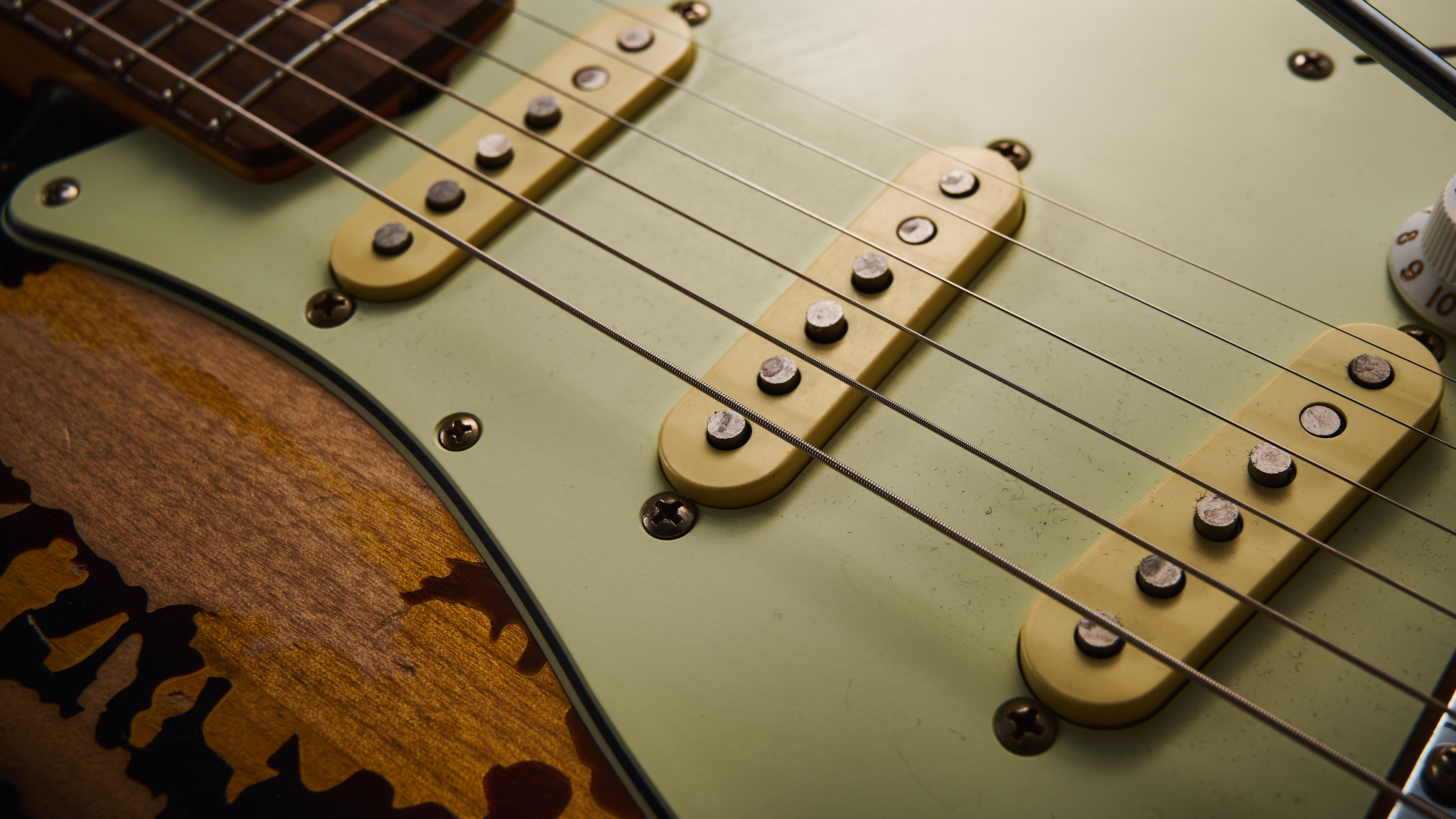MusicRadar Verdict
A wonderful playing and sounding '60 Strat – all parties should be proud. The caveat though is some of the relicing, that suggests there are limits to what the Road Worn series can deliver.
Pros
- +
The best-sounding Mexican Strat to date? It's up there!
- +
A thin neck but wonderfully relic'd for playability
- +
Great pickups that we'd like to see and hear more of
Cons
- -
Some of the finish relic'ing is unconvincing
- -
- -
MusicRadar's got your back
Fender Mike McCready Stratocaster: What is it?

The most expensive Mexican Fender electric guitar currently available, and also the most heavily-relic'd Road Worn guitar: the Mike McCready Strat is nitroglycerin for internet forum debate. It's also an attempt to recreate the 1960 Strat that saw a $15,000 Custom Shop model greeted with a sigh of resignation from Pearl Jam fans. Fender can't win, can they? But I, for one, welcome this, and it has nothing to do with my Pearl Jam fan credentials. This is ambitious stuff – and it could herald a whole new era of signature model guitars. If it's a success.
Mike McCready spent 30 years believing he owned a 1959 Fender Stratocaster. The perfect pairing with his 'King Of Kings' Les Paul from the same year, he has used in on every Pearl Jam record after 1992's Ten and around 1,000 live shows and counting. The band's techs discovered the truth before he knew, eventually being forced to break the news to him that it was in fact a 1960 model when the signature model process ramped up and things got forensic.
"I should have known better because I'd played '59s besides mine and the necks were always bigger, more kind of baseball bat-like," he told MusicRadar earlier this year. But I never put that together with mine. I was like, 'Oh, mine just has a thinner neck'.
The neck is another matter I'll get to in due course, but McCready's involvement in this version of his Strat went to the point of prototype and even recent final model testing at Pearl Jam shows.

"I wanted to make sure I was playing this thing live so I could have the confidence to go, 'Oh yeah it's something that's worth buying'. I played it on Indifference, I played it on [Yellow] Ledbetter, Daughter… I've played it on six other songs. Strat-type songs, just to see if it can hold up to what my real 1960 does. And it does."
McCready is far too long into a successful and uncompromising career to reel out stock platitudes for a guitar he's only kind-of backing. "The original sounds the best, I'm not gonna lie, because that's the original, but this one is right next to that," he told me. Expectations are understandably high, and now I have the Ensenada-made Mike McCready Strat in my hands so let's get started…
Fender Mike McCready Stratocaster: Performance and verdict

The leaps from anything we've previously seen on a Road Worn guitar previously can't be overstated here. By this I mean the sheer scale of the artificial wear here to attempt to recreate the look of McCready's original. It's significant, and it will be too much for even those who are even onboard with the whole artificial aging thing.
Want all the hottest music and gear news, reviews, deals, features and more, direct to your inbox? Sign up here.
That's understandable – there is a lot of finish 'worn' away here. It's a very heavy relic. The first thing I should say if you've never seen a Road Worn Fender up close is to temper your expectations; don't go looking for Murphy Lab patina as you'll come away disappointed. From a distance it has all the markings of a guitar with decades of play under what's left of its nitrocellulose, but a closer looks reveals areas where the Road Worn ambition may be reaching its feasible limits.
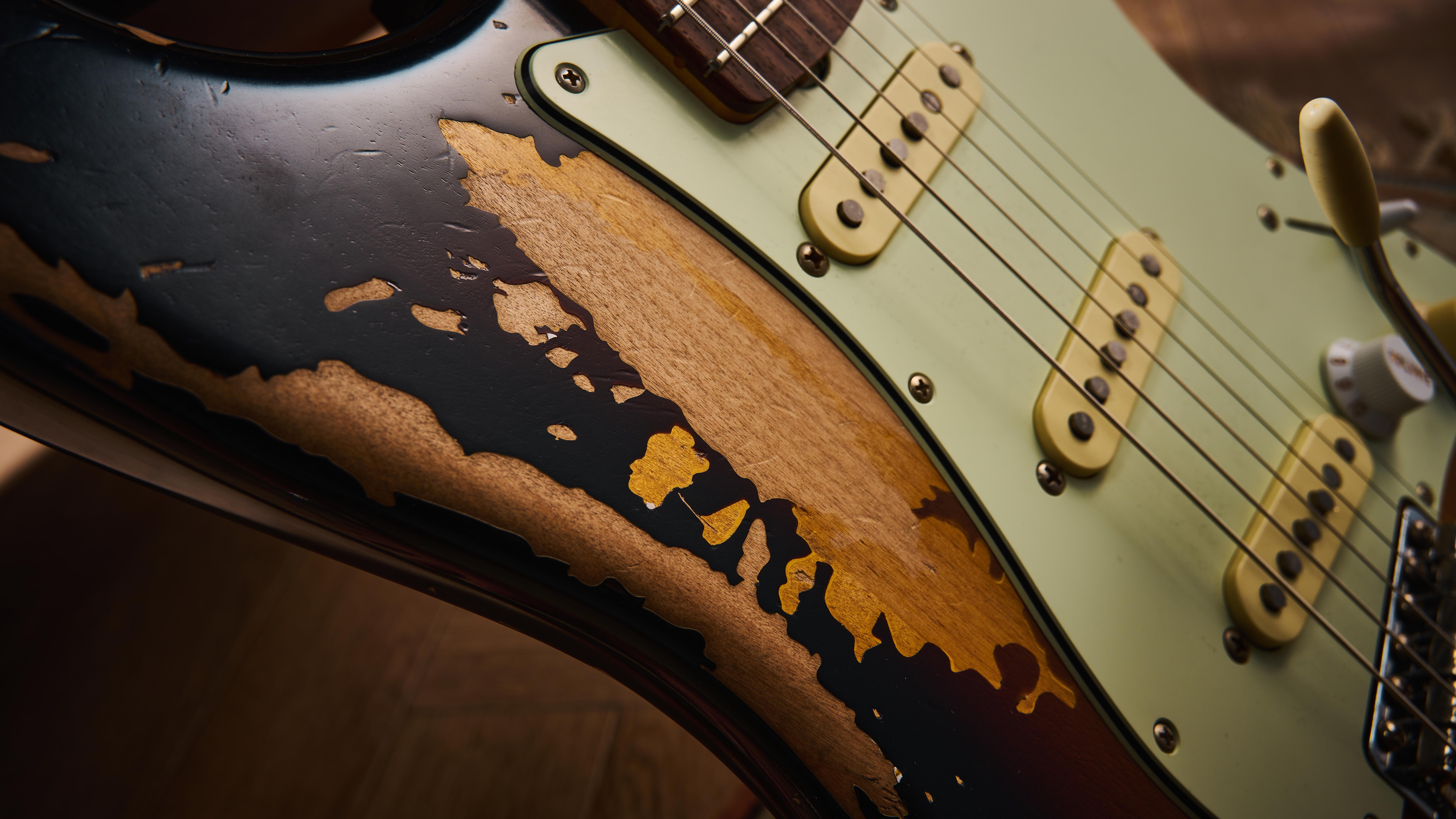
There are chips, dinks and yellow stains in the bare alder aplenty… and it looks like something had a chew on the lower bout. Every inch of this guitar's body has been aged in some way – and it looks like a time-consuming process to echo McCready's original. It's a strange feeling to pick it up; I know I'm holding a 'new' guitar and yet, I start to forget. As long as I don't look too closely. The lighter aging of the hardware is subtle but there are areas of this guitar's finish that just don't look close enough to being aged in a way that doesn't look fake.

Fender has an unenviable task with the relicing challenge; it needs to replicate the same areas and shaping of wear on McCready's guitar. That's a lot for a production line guitar and the larger and more pronounced these areas of the finish (or lack of it) are, the more the limitations of the factory process are exposed for me. Rather than a softer contrast between the finish and thinly stained alder of the upper bout above the pickguard and the back's lower bout, it looks more akin to the hard jagged edges of a map's coastline.
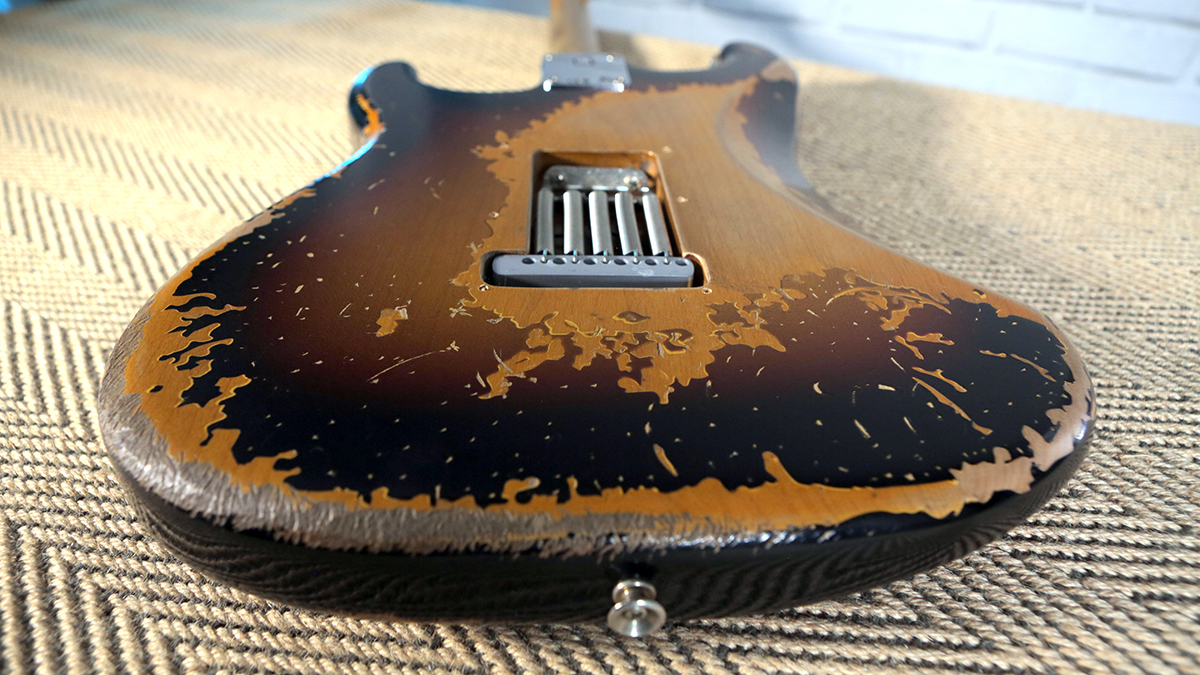
Clearly, relic'ing is a fine art and you have to pay a high Custom Shop price for a nuanced aesthetic. Whereas the more lightly-aged approach of the Vintera Road Worn models is much more successful because sometimes less is more… convincing.
Playing it over time will hopefully blur the edges more and add to the character. To critique the scale of relic'ing here feels unfair considering the guitar it's based on but obviously, don't expect this to look like the real thing. Approximation is the keyword. Either way, you won't have that horrible 'first knock' experience here as you'll struggle to find evidence of it.
But moreover, there's much more to say about this guitar that's hugely positive.
The look of relic'ing is often the only thing its detractors will focus on, but that played-in feel I mentioned is a huge draw for many players. The neck is where that can be felt most. It's impressed before in Fender Road Worn line and here it looks as good as it feels.
The aged white dot fret markers have a clay look to immediately conjure the vintage era vibe, but the look of ingrained wear and staining is complemented by a smooth feel that's far more than a steel wool treatment. It feels like a neck that's had decades of play, and really gives you a ticket into a realm of guitars few of us can usually afford or even try.
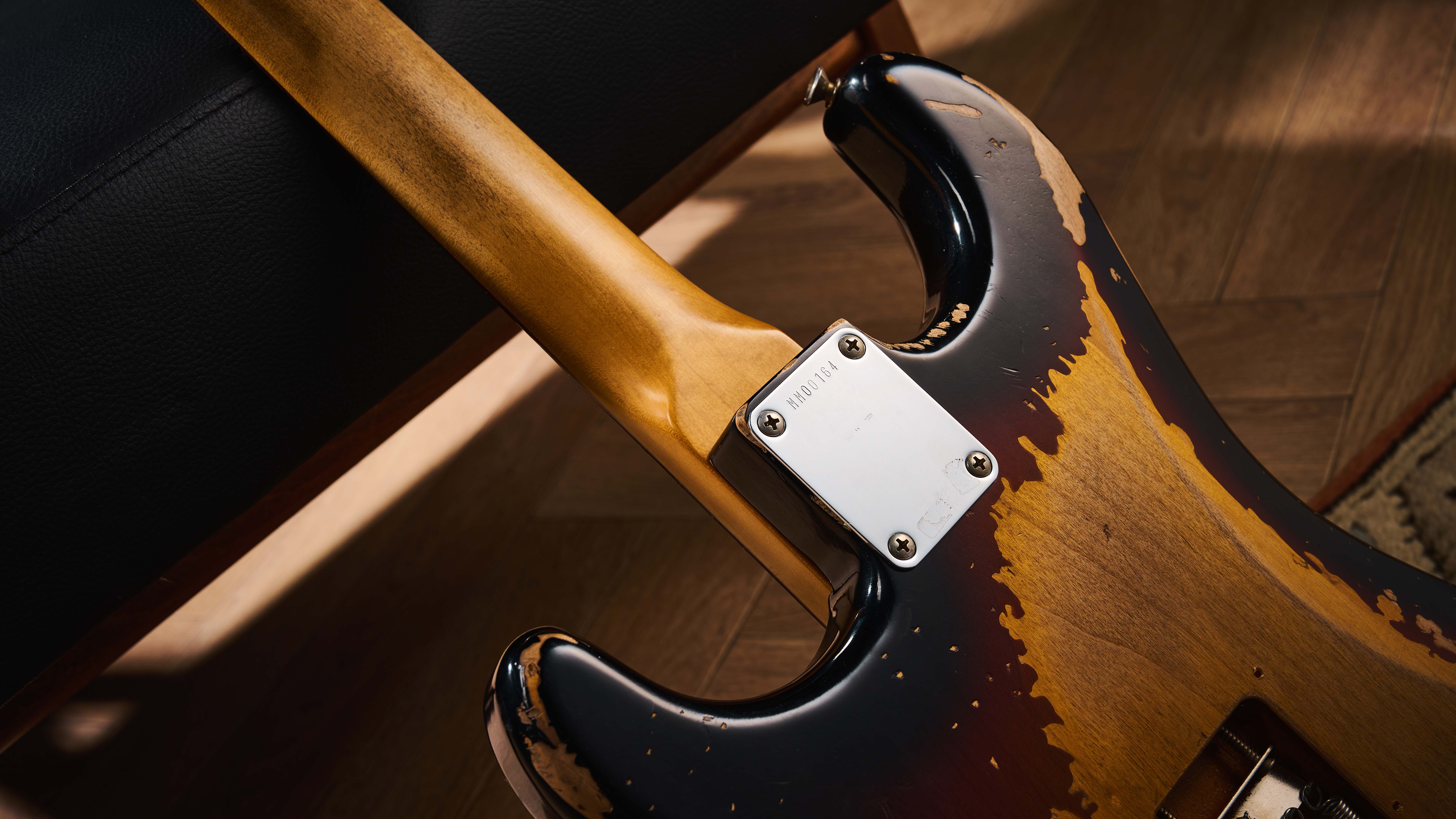
"The 1960 Strats have a thinner-type neck, and I have small hands so that's easier to play for me," McCready told me. Fender calls it a Slim C, and it really is, especially coming from modern spec'd Strats. Thinner than what you may think a '60 Strat would have. And it combines, or helps to create, the feeling of a flatter 9.5" radius than I would have expected. I don't have long fingers or particularly large hands – I gravitate to Mustangs – but it feels like the slightest Strat neck I have encountered. It's based on McCready's neck after all, but fans of more contemporary Fender C-shape necks really need to try before they buy. But make you give it time if you do…

Because it's well worth spending time with. "I like guitars that play like they're old," McCready said. "That's what I gravitate towards. And they have to play good the first time I play him or they never get better for me. And this one does that for me."
Well full marks on the first, but the second one may take more time for other players – we're all different, after all. But you don't grapple with this guitar, the neck profile rewards a light touch, especially with the low action here (1.30mm from the low E, 1.20mm from the high E]. It reveals itself as a distinct and rewarding playing experience.
In terms of build, our test model is good. My fret rocker reveals no troublesome high spots of note, though the rosewood looks like it really needs a drink – that would likely darken it nicely. There are no sharp fret edges and the 'board edges feel rolled. Weight is about the norm these days at 7.8lbs – pretty standard for an alder Strat but I prefer them lighter myself. And it has a good balance so it doesn't quite even feel that weight anyway to me.
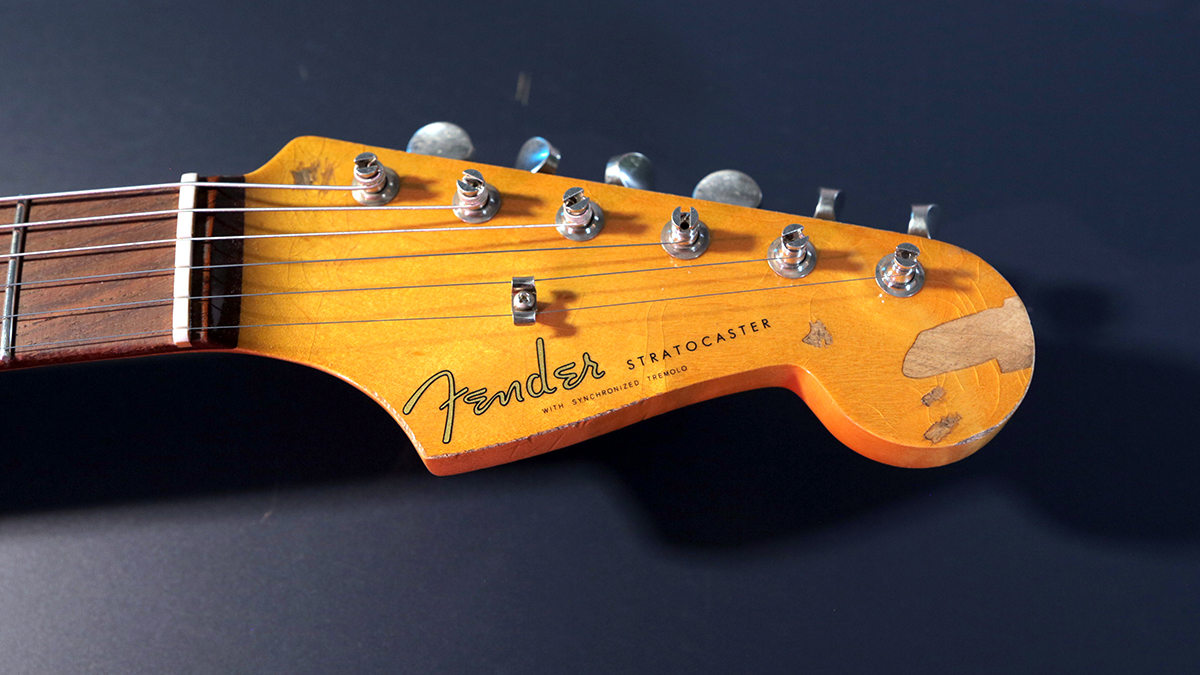
Plugging in for a ticket to a golden era of Fender turns out to be exactly as I'd hoped. McCready insisted the pickups had to be as close to his originals as the company could get, and we'll take his word for it because what is clear is this is a really great-sounding vintage-voiced Strat.
Fender needs to start selling these pickups for the rest of us. They're wonderfully balanced and it really benefits the combination positions two and four that McCready often goes to (hear Mad Season's River Of Deceit) with a bridge that sears without ever sounding thin and is my favorite contemporary Strat example I can recall.

The muscular, but slightly chambered feel of the middle position reminds me it's such an unheralded secret weapon on the Strat and a neck pickup that's a lovely equilibrium between warm girth and woody definition. I found myself moving around the voices much more than I unusually do with a Strat because that bridge pickup feels so well-voiced and the treble bleed cap included here pays dividends when controlling the gain through a Marshall Plexi and Fender Deluxe Reverb.
The only change I'd make is the simple mod to add the tone control to the bridge pickup, just for extra scope because… why not have more at your disposal? But needless to say, I can see why Mr McCready was so happy to test this signature model with the band. And by this point I was really bonding with the neck and the easy chord voicings it afforded my hand… just as I have to send the guitar back. Such is the life of a reviewer.
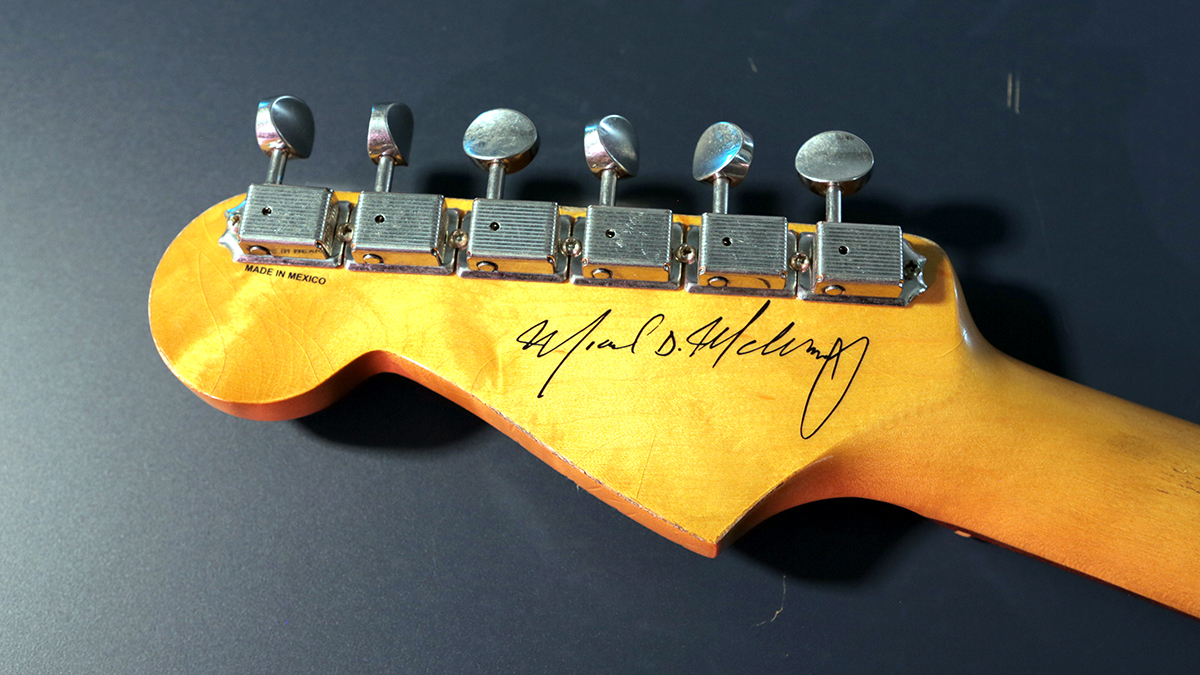
It's very easy to let the relic'ing become the headline story here, but this is the best sounding Mexican-made Strat I have played from Fender. It's a real heart-stealer and reflects a process of input from a player and his tech who intimately know the blueprint it's based on. My experience with the neck surprised me; my initial fears that it was too thin for my tastes faded from just playing it and letting it inform my approaches.
And that's the thing about preconceptions; they can be washed away by experiences. For fans this is the closest they'll get to McCready's trusted stead for realistic money. And for what it's worth, the guitarist had hoped to offer it to them even cheaper, but the balance of the standards required to deliver the guitar worthy have resulted in the most expensive Mexican Strat available at time of writing. But it's a recreation of a 1960 model most of us will never get to play of an example of. And it really does sound and play incredibly well. It also feels great.
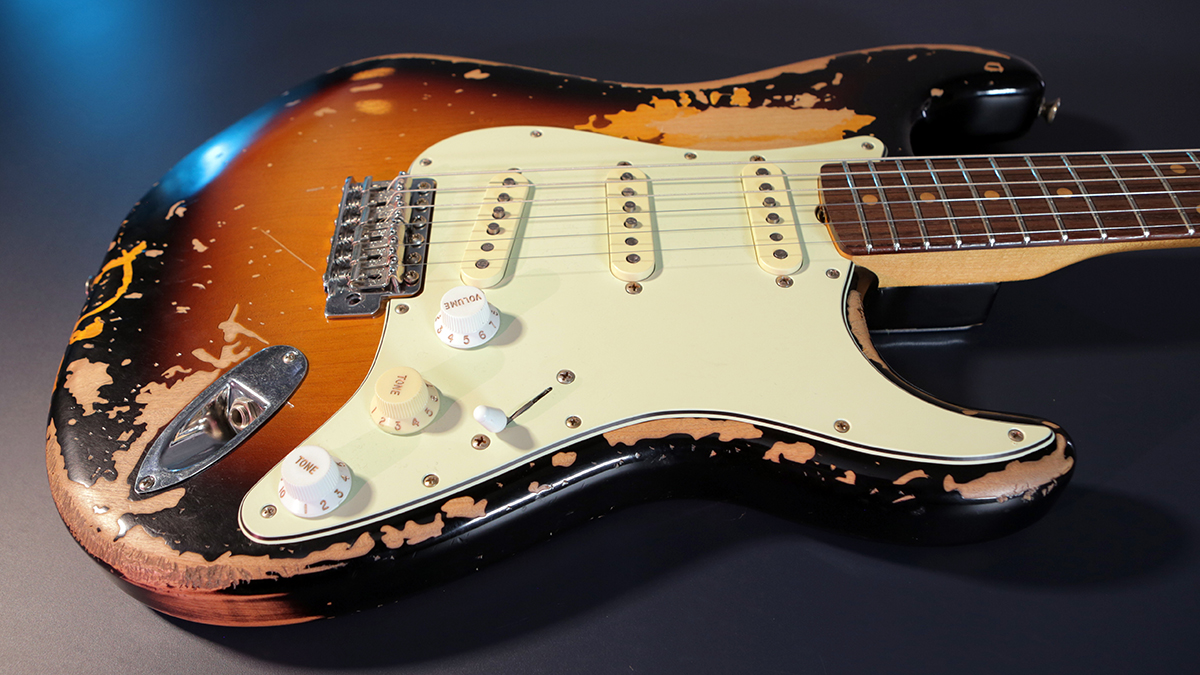
The sticking point for some will be the body relic'ing. Not the amount – that's a given for this specific signature guitar. But some of it is somewhat jarring on closer look, and that could give pause to potential investors. Which is a shame. But I'm excited about the future; what other signature models can be brought within reach of more players with Road Worn treatment? Because the quality of tones and playing experience here suggests great things ahead for Ensenada-made guitars.
MusicRadar verdict: A wonderful playing and sounding '60 Strat – all parties should be proud. The caveat though is some of the relicing, that suggests there are limits to what the Road Worn series can deliver.
Fender Mike McCready Stratocaster: Hands-on demos
Fender (featuring Mike McCready)
The Music Zoo
Mooloolaba Music
Fender Mike McCready Stratocaster: Specifications

- TYPE: Solid-body electric, made in Mexico
- BODY: Alder, Road Worn nitrocellulose lacquer
- NECK: Maple, Slim C
- SCALE: 25.5”
- FINGERBOARD: Slab rosewood, 9.5" radius
- FRETS: 21, Jescar Medium Vintage
- NUT Bone, 42mm
- STRING SPACING: 54mm
- ELECTRICS: 3x Custom Mike McCready '60s Single-Coil Strat, Treble Bleed Circuit
- CONTROLS: Master volume, Tone 1 (neck pickup), Tone 2 (middle pickup)
- HARDWARE: Six-saddle Vintage-Style Synchronized Tremolo with Bent Steel Saddles, Fender Vintage-Style tuners,
- WEIGHT: 7.8lbs / 3.5kg
- CASE: Deluxe Brown hardshell
- FINISH: Road Worn 3-Colour Sunburst, 3-ply Mint Green pickguard
- CONTACT: Fender

Rob is the Reviews Editor for GuitarWorld.com and MusicRadar guitars, so spends most of his waking hours (and beyond) thinking about and trying the latest gear while making sure our reviews team is giving you thorough and honest tests of it. He's worked for guitar mags and sites as a writer and editor for nearly 20 years but still winces at the thought of restringing anything with a Floyd Rose.
